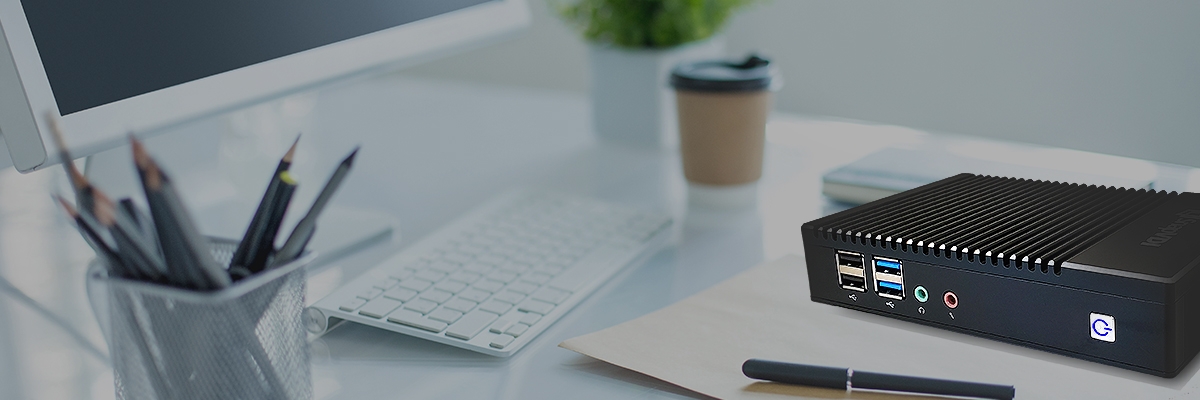
5 Factors to Consider Before You Purchase a VDI Thin or Zero Client
When implementing VDI into your IT infrastructure, IT Managers must decide which thin or zero clients to purchase to replace their environment’s physical desktops. When researching thin and zero clients, you are going to come across an abundance of vendors in the market, all of which seem to have their own benefits and pitfalls. In this post, we’re going to dive deeper into what you should consider prior to purchasing thin or zero clients for your IT Infrastructure.
1.) Compatibility
The first aspect you’re going to investigate when purchasing a thin or zero client is compatibility. You must verify the thin or zero clients you implement are compatible with your VDI environment. For example, if you are running a Citrix environment, you must be sure that your devices support Citrix. If you’re running a Microsoft VDI environment, you need to be sure that your devices support Microsoft. You don’t want to go through the hassle of purchasing thin or zero clients, and realize upon installation that you aren’t able to implement the devices into your infrastructure because the devices are not compatible with your hypervisor.
2.) Performance
While thin and zero clients are not desktops, you still are going to require some performance from these devices. You want the experience of VDI to be identical to that of a desktop, and you want boot up times to occur in a matter of seconds, just as it would with a desktop. Many IT Managers are going to want to have some flash within these devices to really get the most out of them, and a processor that is able to process the data effectively. It’s also important to consider dual monitor support, as many workers today require dual monitors while on the job. It is essential to verify that the device has the performance capabilities to support dual monitors. Furthermore, no one enjoys watching pixelated videos, so it is recommended that your thin or zero clients support 1920 x 1200 maximum resolution and can accommodate high-end visual demands.
3.) Simplicity
No one enjoys complications, especially when it comes to your IT environment. This holds true for your thin or zero clients. Your thin or zero clients should be simple. The management should be simple, and you should be able to implement, use, and manage the devices with ease. With VDI deployments, administrators are going to want to roll out mass software updates, and this should be possible with just a few clicks. IT Administrators often want USB port control, and it is important to make sure your device is capable of controlling and locking USB ports for security purposes. With VDI, multiple user templates are often deployed, and being able to streamline the creation of multiple users at a time should be attainable. This gives administrators the freedom to skip the tedium of individual desktop setups.
4.) Scalability
Scalability is something all companies need to be aware of. If your company is growing (which most are), you are going to want to make sure your IT infrastructure is scalable. This includes your thin or zero clients. These devices should be able to be deployed anywhere from small scale test environments to thousands of installs. The devices should also support multiple network speeds because you never know when things are going to change within your infrastructure.
5.) Power Consumption
One important benefit of VDI over traditional desktops is the dramatic power reduction, and it is important to ensure that your thin or zero clients assist in this power reduction. When deploying hundreds or thousands of thin or zero clients, you will see that the power savings add up very quickly. It’s recommended that your devices utilize around 5W under a standard load. This is dramatic when compared to the typical 100W of a traditional desktop. Another added benefit you may want to consider when looking at thin or zero clients is the ability to schedule your devices to automatically shut down after working hours and boot before the start of the business day, which increases power savings even more. Certifications are also important to many IT Administrators, so verify the devices you are purchasing are RoHS compliant and EnergyStar certified.
Bonus – Reliability
Reliability is essential in every aspect of an IT Infrastructure. Purchasing products from a company with a long, successful history is one way to ensure you are getting a reliable product. Another way to validate this is through testing a Proof-of-Concept (POC) of the thin or zero clients. This way you are able to test the product in your specific environment, and are able to see if it works for you.
SnapVDI offers it’s thin and zero clients with a no-obligation, free of charge POC to test in your infrastructure. To get your free evaluation unit, visit us at amzetta.com/evaluation.